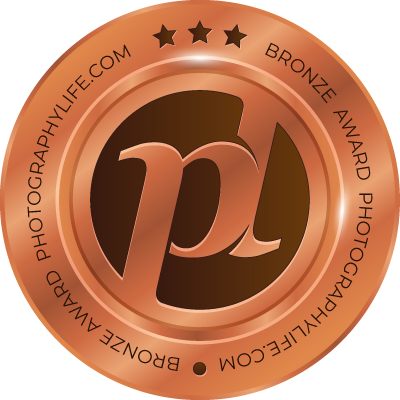The Nikon Z 28mm f/2.8 is a lens with different compromises from most Nikon Z glass. Rather than a brilliant lens that’s a bit on the big and expensive side, it’s a solid performer that is extremely small and reasonably priced. In my opinion, every Nikon Z shooter who wants to travel lightweight on occasion should get either the Z 28mm f/2.8 or the Z 40mm f/2, depending on which focal length and maximum aperture you find more useful.

But as much as I like the Nikon Z 28mm f/2.8, it has some flaws, too. Optically, I have no issue with the lens’s sharpness, even though Nikon’s S-line primes (and some S-line zooms) clearly beat it overall. Rather, it’s other areas of performance – vignetting, distortion, chromatic aberration, and flare – where it falls behind many alternatives for Nikon’s mirrorless cameras.
To put it another way, the Nikon Z 28mm f/2.8’s performance is worse than the Nikon Z 24-70mm f/4 S zoom, if the zoom is set to 28mm. While sharpness is roughly comparable, the 24-70mm f/4 has less vignetting, distortion, chromatic aberration, and flare at 28mm than the 28mm f/2.8 does. The differences in those areas aren’t always drastic, but they exist.
Since most Nikon Z photographers already have the 24-70mm f/4 S (or the optically similar 24-120mm f/4 S), it’s worth thinking about this comparison a bit more. Does the 28mm f/2.8 add something you don’t already have? The answer is going to be yes for some photographers – it’s a brighter, lighter, and less expensive lens. For other photographers, the answer may not be so clear.

Here’s how I’d sum up the pros and cons.
Pros:
- Tight build quality tolerances and no external moving parts (aside from the focus ring)
- Excellent autofocus speed and accuracy
- Surprisingly smooth bokeh
- Very lightweight at 155 g / 0.34 pounds
- Highly portable due to the small size
- Low MSRP of $300
Cons:
- Plastic lens mount rather than metal
- No controls or handling features on the lens (aside from the focus ring)
- No fluorine-coated front element to repel dust and water
- Higher vignetting, distortion, and chromatic aberration than ideal (though not terrible in any of them)
- High levels of focus shift and field curvature
- Bad flare performance and nonexistent sunstars
As with my review of the Nikon Z 40mm f/2, I struggled to determine whether sharpness would count as a “pro” or “con” for the 28mm f/2.8. On one hand, it’s not as sharp as most alternatives you may be considering for the Nikon Z system. On the other hand, it’s far from the weakest lens on the market in sharpness and should be more than enough for most use cases. The techie in me wants to put sharpness as a con, and the photographer in me wants to put it as a pro. I leave it up to you to decide.

Overall, I see the Nikon Z 28mm f/2.8 as a great travel and hiking lens because it’s so small and portable. Pack this lens and something like the Tamron 70-300mm f/4.5-6.3, and you’ll have what you need for round-the-world travel in a featherweight package (at a price where it can be replaced if broken/lost along the way). I hope that Nikon makes more lenses that prioritize weight and price along the same lines as the 28mm f/2.8 and 40mm f/2.
Even so, the 28mm f/2.8 strikes me as a somewhat tough lens to pair with one of Nikon’s midrange zooms like the 24-70mm f/4 S, 24-120mm f/4 S, or 24-200mm f/4-6.3. It’s just a bit too similar to how those zooms already perform around the 28mm mark, so you’re left questioning whether it’s worth carrying another lens just to get f/2.8. By comparison, the 40mm f/2 doesn’t really have that problem. I see it as the more versatile lens to pair with the average photographer’s existing kit.
That said, the 28mm f/2.8 could still find a nice place in your kit. It pairs well with lightweight telephotos like the Tamron lens I just mentioned, not to mention with the Nikon Z 40mm f/2 itself. That’s the two-lens combo I brought with me on several trips this year. Although I sometimes regretted not having a longer lens, the 28mm/40mm duo was effortless to use all day and carry on long hikes. Next time, I’d probably throw in the Tamron 70-300mm as well, though.
A final reason to get the 28mm f/2.8 would be the “body cap” possibility that I mentioned earlier. The Nikon Z 28mm f/2.8 is so light, unobtrusive, and quick to use that there’s no harm keeping it on your camera (or in your bag) all the time. I’d even say that the lens became an excuse for me – an excuse to carry my camera along more often, just in case something interesting happened.

I hope that you found this review of the Nikon Z 28mm f/2.8 to be useful! If you want to purchase the lens, you can thank Photography Life for all the work that went into this review by using the link below:
- Nikon Z 28mm f/2.8 at B&H – Current Price and Sales
The next page of this review has some more sample photos from the Nikon Z 28mm f/2.8, followed by reader comments on the final page. Click the menu below to jump to the section you want to visit.
Note that, at the moment, the star rating below is not totally comparable to that of other lenses we’ve reviewed at Photography Life. I’m currently going through all of our old lens reviews and updating their star ratings to a modern standard. The process will take me several weeks to finish.
Nikon Z 28mm f/2.8
- Optical Performance
- Build Quality
- Value
Photography Life Overall Rating

Table of Contents